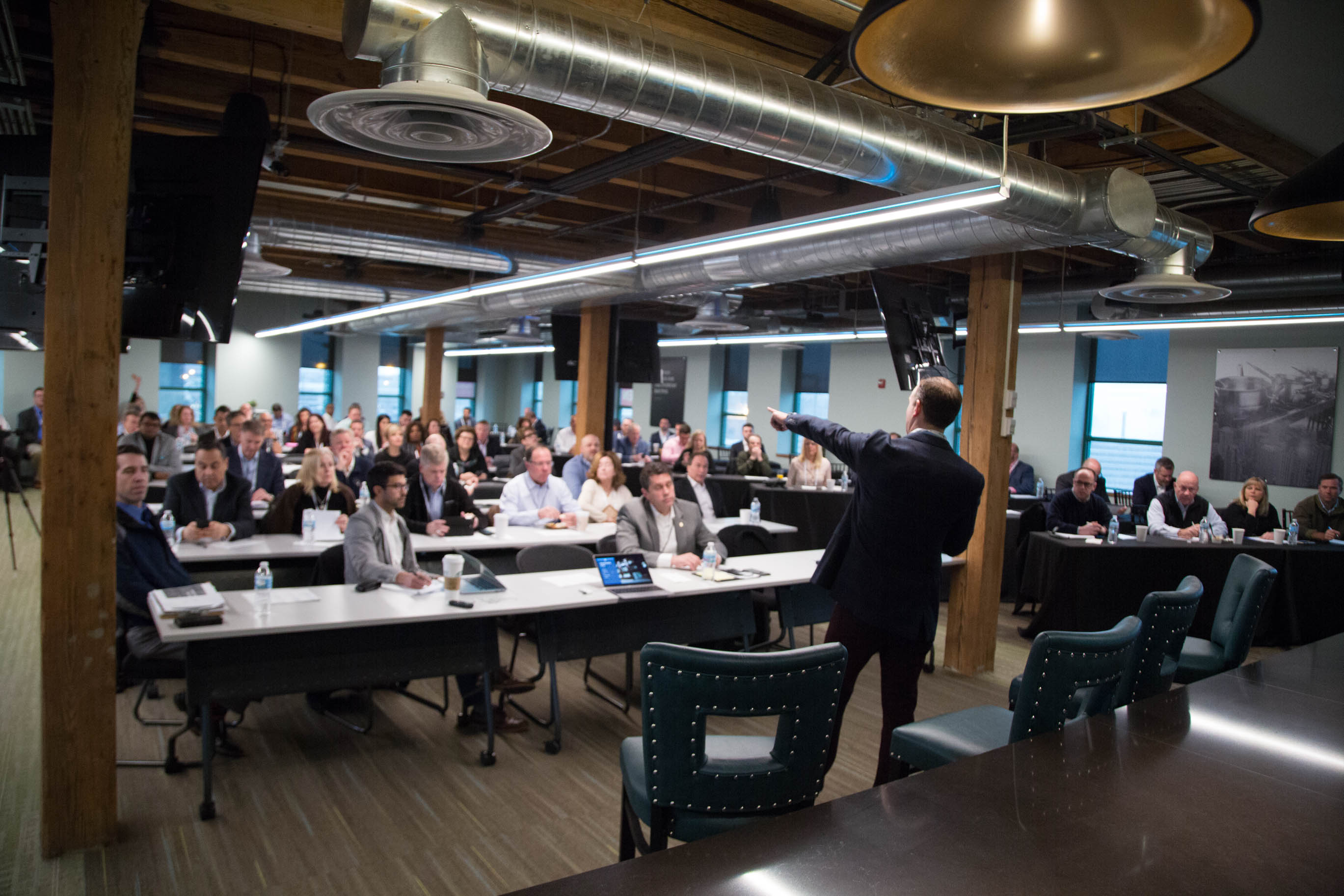Older adults’ culinary preferences and tastes are changing rapidly, and senior living providers must adopt new techniques and technologies to keep up. Some of these trends, such as fast casual service or food hall-style venues, are already gaining ground in communities. Others, such as robotic chefs, might seem like science fiction, but providers need to be thinking big or they risk quickly falling behind the curve.
Experts delved into the trends and technology creating the senior living dining experience of the future at Dished, a Senior Housing News event that gathered dozens innovators under one roof in Chicago on March 1 to talk about the future of dining in senior living.
Today’s trends
Many of the dining trends that could soon become senior living industry standards have already appeared in some communities. Fast casual restaurants with customized food orders, stylish menus, kitchens that are visible from the dining area and modern decor are already popping up in properties belonging to large providers such as Erickson Living, for example.
As more baby boomers move into senior housing in the coming years, it’s natural to assume they’ll want the same things they enjoyed while living at home—and they want more fast casual choices, explained Philip Dobson, vice president of design and retail at Morrison Community Living. Morrison is a hospitality company that provides dining and other services to more than 350 senior living clients.
“Everyone is used to Chick-fil-A, Panera,” he said. “Now, they move into one of our communities, and we need to create those same options for them. The days of a dining room with rows of tables are gone.”
The fast casual revolution in senior living might also include touchscreen kiosks and new point of sale (POS) ticketing systems that can keep up with the fast pace of the dining setting.
“The screens being in the fast casual restaurant, we also need to infuse that technology into the process, because now those tickets are keeping up with the orders,” said Andrey Teleguz, president of SCOPOS Hospitality Group, a firm hospitality consulting, design and operational support to senior living providers. “These digital production management screens tied in with those POS systems now can increase that speed, efficiency and accuracy of the order, which is the most important factor.”
All told, it can take anywhere between $200,000 and $350,000 to add a typical fast casual cafe to a senior living community, said Aaron Brown, division president at Morrison Community Living.
Other trends on the cusp of being standardized in the senior living industry include wall-mounted culinary gardens, sous vide preparations, blast chillers, convertible demonstration kitchens, farm-to-table dining, restaurants or bars with their own unique branding and forward-thinking design elements such as high-top bar seating and outdoor dining setups.
Tomorrow’s technology
Not every dining trend and technological advance is on the precipice of widespread adoption among senior living providers, but there are many are worth exploring. One such technology that could eventually find a home in senior living is facial recognition technology.
Residents would approach a sales terminal that would recognize their identity for payment purposes. Already, that kind of facial recognition technology is employed by at least one small fast casual restaurant chain.
“How cool would that be with our residents and our resident accounts?” Teleguz mused. “Why can’t that be applied? It hasn’t been yet, but we see it coming.”
In general, senior living providers can find inspiration in trends that are currently hitting the consumer dining world but haven’t yet made it to the industry. For example, the number of food halls—clusters of micro restaurants or culinary shops in an upscale, food court-type setting—grew by 37% in the U.S. in 2016, according to the Wall Street Journal.
Other ideas that could one day find a home in senior living communities are touchscreen “smart” tables; food dispensed by 3-D printers or assembled by robotic arms,; vending machines that serve cupcakes, pizza or salad; and electrostatic glass that can become opaque at the touch of a button.
Not all of these innovations will come to pass—but that doesn’t mean industry leaders should ignore them. For proof of that concept, one must only think of the cell phone industry.
“Think about back in the day, when somebody said you’re going to be able to take a call from your car. We all thought they were nuts, right?” Brown said. “Now, in a very short time, our lives are evolving around that phone.”
Written by Tim Regan


